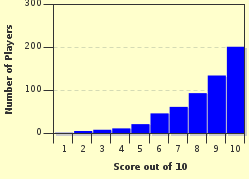Quiz Answer Key and Fun Facts
1. Although I painted some garden scenes that included roses, I am perhaps better known for more watery flowers. One of my works inspired the name of the Impressionist movement in art. Which rose am I?
2. Flowers didn't feature much in my Blue Period, but one of my Rose Period paintings had roses in it. Which rose am I?
3. I painted odalisques in bright and expressive colours, produced sculptures and prints, and explored "painting with scissors". The portrait of my wife is sometimes known as "The Green Line". Which rose am I?
4. Perhaps my most recognisable work was "Avenue at Middelharnis", a study of a road bordered by very tall spindly trees. I am regarded as one of the great 17th century Dutch landscape painters. Which rose am I?
5. I was a Dutch artist, and you may call me by my first name. My famous work, "The Company of Frans Banning Cocq and Willem van Ruytenburch" has a much shorter common title that sounds like a nocturnal timepiece. Which rose am I?
6. An Italian artist of the High Renaissance, I was commissioned by Pope Julius II to paint a suite of reception rooms in the Vatican. I am another artist usually known by my first name only. Which rose am I?
7. I may have been lacking in height, but certainly not in talent: the management at the Moulin Rouge always reserved a seat for me after I helped with their advertising. Which rose am I?
8. From Nuremberg, and well-known for my detailed woodcuts and prints, including one of a rhinoceros I had never seen, I pray you will guess my name. Which rose am I?
9. Apprenticed to Bellini in Venice, I became the leading light of 16th century Renaissance Art. My early works are renowned for their vivid luminosity. I died at an advanced age from plague. Which rose am I?
10. My name means "little barrels" and while I may have eaten pasta primavera, I am better known for painting "Primavera". Which rose am I?
Source: Author
Mistigris
This quiz was reviewed by FunTrivia editor
Bruyere before going online.
Any errors found in FunTrivia content are routinely corrected through our feedback system.

